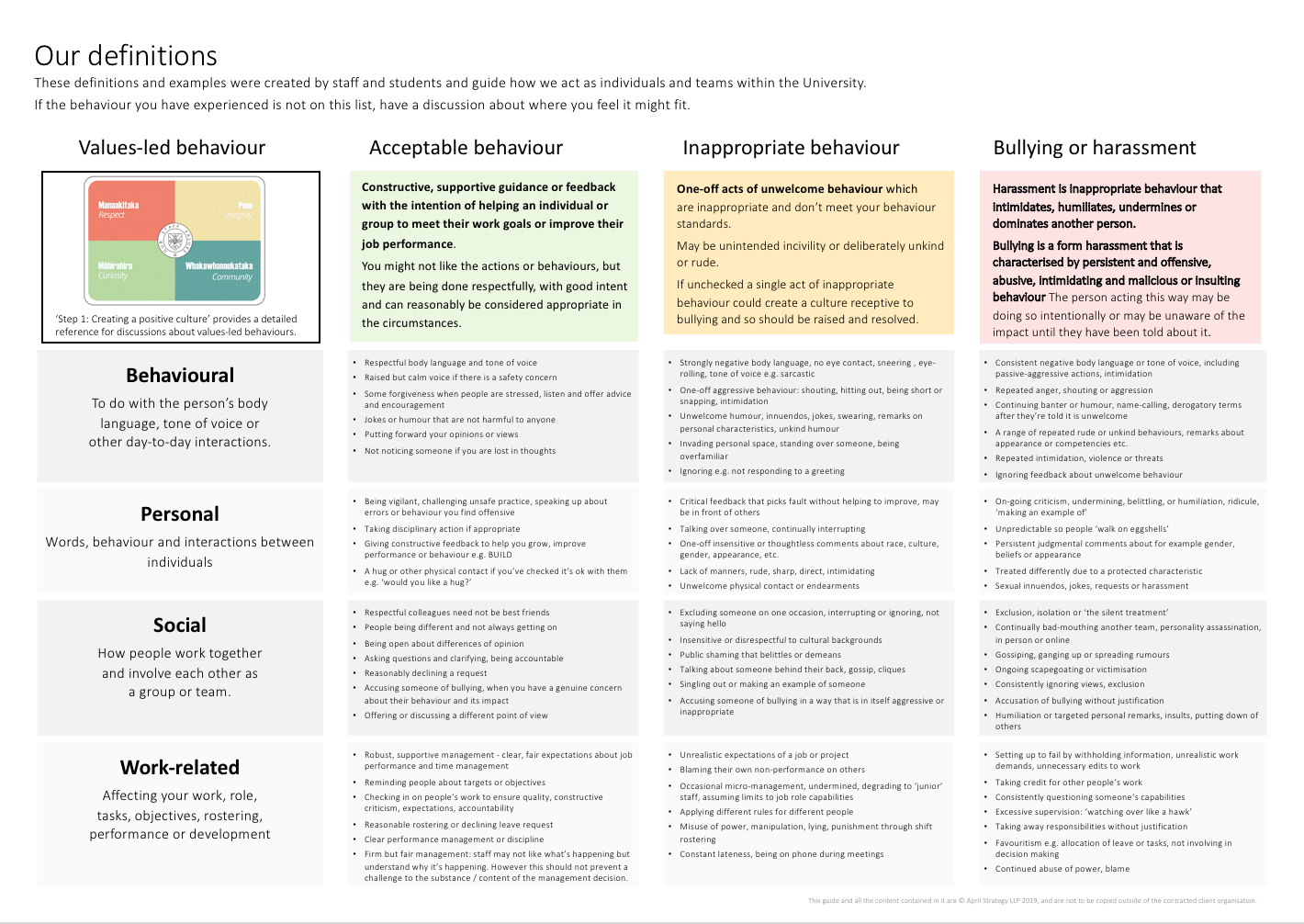Our definitions of acceptable and unacceptable behaviours
OUR AIM: A POSITIVE CULTURE
Our aim should be to create a positive culture where people consistently demonstrate your values and behaviours. All individuals and teams working in our University will be expected to proactively develop a positive culture, to be role models of your behaviours, and to support others to do so.
Sometimes we may experience behaviours that don’t live up to our expectations. When that happens we can better discuss and resolve the situation by understanding what kind of behaviour it is.
APPROPRIATE BEHAVIOUR (even though some people might not like it)
Constructive, supportive guidance or feedback with the intention of helping an individual or group to meet their work goals or improve their job performance.
You might not like the actions or behaviours, but they are being done respectfully, with good intent and can reasonably be considered appropriate in the circumstances. These behaviours may still impact wellbeing. If this is the case, use the contact list at the end of this guide to find support.
INAPPROPRIATE BEHAVIOUR
One-off acts of inappropriate behavior whilst not bullying can harm wellbeing, damage teamwork and increase the likelihood of errors. It may be unintended incivility or deliberate rudeness.
It’s important that any one-off act of inappropriate behavior is raised and resolved to avoid repetition and the potential to impact negatively on team culture.
BULLYING OR HARASSMENT
Harassment is inappropriate behaviour that intimidates, humiliates, undermines or dominates another person. Bullying is a form harassment that is characterised by persistent and offensive, abusive, intimidating and malicious or insulting behaviour (Refer to the University’s Ethical Behaviour Policy for more information).
The person acting this way may be doing so intentionally or may be unaware of the impact of their actions until they have been told about it.
Colleagues have created a helpful Dictionary of Behaviours to help you reflect on your situation, and to talk it through with a trusted colleague or other advocate.
Download a PDF of our detailed 'Dictionary of Behaviours'
